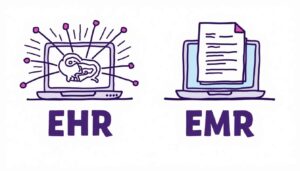Large vs Small Language Models in BPO Operations
27 Mar 2024 By: Maria Rush
Updated
In the fast-paced world of Business Process Outsourcing (BPO), language models transform operations. It improves efficiency and customer satisfaction. This article explores large and small language models in BPO. Highlighting their strengths and weaknesses. Aim to enhance customer service, data analysis, or break language barriers? Understanding these tools is crucial. It will guide you to make informed business decisions.

Understanding Language Models in BPO Operations
Before diving in, let’s break down what language models really mean. Think of them as complex algorithms that grasp and interpret human language. They’re the tech that lets computers understand and engage in natural conversation. Pretty much like we do—humanly speaking!
In the realm of conversational AI, LMs have been instrumental in developing conversational interfaces. Understanding and responding to the customer’s intent with humanlike responses. These advanced models are not just limited to text-based content creation. They extend to code generation and data generation, showcasing their versatility. By understanding the nuances of human language, these models facilitate more natural and effective interactions between humans and machines. Making them indispensable tools in call centers, BPOs, and various business settings.
With a better understanding of what LMs do, let’s look at their impact in BPO work. These models are like the superheroes of language. Stepping in for tasks ranging from customer service to data analysis and translation.
Discover how to revolutionize your BPO operations with our latest insights on leveraging data analytics!
Moreover, LMs are breaking down the barriers of language by offering translation capabilities that make global communication effortless. This is a game-changer for international businesses enabling them to reach out and connect with a worldwide audience.
When you spot a language model in your BPO work, know it’s not just advanced tech. It’s a linguistic partner, dedicated to clear communication and deep analysis. It helps overcome language barriers. Welcome the power of language models. See your BPO operations reach new levels of efficiency and connectivity.
Unlock the power of language: Dive into our exploration of Multilingual Support and Chat to transform your global communication!
Advantages and Disadvantages of Large Language Models
Large language models are the heavy hitters in the world of words. They come packed with a wealth of knowledge and leave no word unexplored.
Exploring LLMs opens up a world of linguistic talent and tech marvels. These models use complex networks and algorithms. They excel at understanding context and crafting text accurately. It’s like a digital maestro directing a word orchestra, blending creativity and precision.
These models do more than create text. They analyze feelings, translate languages, and produce content. Their wide range of skills is vital in AI and language processing.
Benefits of Large Language Models
LLMs excel in understanding context and crafting precise responses. They capture human language’s subtleties and adjust their replies skillfully. Shakespeare would admire their finesse!
These models are also great at processing data. They analyze huge amounts of information, revealing insights and solving tough problems effortlessly. They truly are the geniuses of the language world.
Drawbacks of Large Language Models
Large language models face challenges too. Their size demands lots of computational power and memory. It’s like keeping a huge library powered up!
Training them is tough. They need massive datasets, making it a slow and expensive task. Think of it as feeding a dragon that craves words.
Running these giants takes serious tech and lots of energy. It’s like powering a digital giant, always needing more computational fuel.
Advantages and Disadvantages of Small Language Models
Now, let’s shine a light on the smaller players in the field. Small language models may not boast the vast prowess of their bigger relatives. But, they pack a punch in their own special ways. Let’s dive deeper!
Exploring the world of SLMs reveals their distinct charm. Unlike their larger counterparts, these compact models are like master craftsmen. Shining on their quick adaptability and precision in handling specific language tasks.
Benefits of Small Language Models
Small language models are swift and efficient. They start up easily and quickly. Picture a tiny language expert ready to assist anytime!
Training them is simple. They don’t use much computing power. These models prove that you don’t need size for big achievements.
They’re versatile and adapt well to various settings. They handle language tasks with skill and accuracy, proving their worth.
Drawbacks of Small Language Models
Yet, SLMs have limitations. They sometimes lack the accuracy of larger models, especially with complicated tasks.
Even with their abilities, they might not excel in tasks needing broad understanding or deep analysis. Imagine a skilled craftsperson with few tools, trying to navigate complex challenges.
Comparing Large and Small Language Models in BPO
After examining the strengths and challenges of both large and small language models, we’ll compare them. Our focus is on performance and cost.
First, understanding the differences between large and small models is key. Large models have big databases and complex designs. They offer accurate and context-rich responses. They handle a wide range of tasks effectively.
Small language models, while less complex, are fast and straightforward. They respond quickly to simple questions. They are ideal for tasks that require quick answers rather than deep analysis.
Performance Comparison
When it comes to performance, large language models lead the pack with their exceptional accuracy and deep contextual insight. They navigate through complex questions with ease. Leaving users impressed by their linguistic capabilities!
Meanwhile, small language models may not reach the same heights of sophistication. But, they stand out for their quickness and ability to respond promptly. They’re stars at managing simpler inquiries, ensuring fast and effective solutions.
Digging into the details, large language models flaunt their skill in dealing with varied language patterns and subtleties. Thanks to thorough training, they can match different linguistic tones and settings. Offering a well-rounded grasp of what users ask.
In contrast, small language models shine in tasks where immediate action is needed. Their focused and speedy approach makes for rapid exchanges. Perfectly suited for moments when time is critical.
Cost Comparison
Discussing cost, large language models are like the luxury cars of technology. They’re powerful and impressive, but expensive. Setting them up requires a lot of resources and money, which can stretch your budget.
Conversely, small language models are akin to economical, compact cars in tech terms. They use fewer resources and are cheaper to develop.
Looking past initial expenses, small language models prove their worth with operational efficiency. They’re designed to save on training costs and ongoing computing expenses. This makes them a wise choice for businesses looking to efficiently handle language tasks without overspending.
Trending Now
An article from Diginomica explained that the rush to use Large Language Models (LLMs) in businesses may lead to disappointment. LLMs are big, slow, and expensive. They may not be the best tool for many businesses. Maria Markstedter points out security risks with AI and automation. LLMs are good for complex tasks where quality is crucial, like medical research. But, they are overkill for many business needs. Small Language Models (SLMs) are now emerging as a better option. Companies like Microsoft, Meta, and Google are developing these “lite” models. They require fewer resources and are cheaper. Experts from Domino Data Lab and Iris.ai believe SLMs meet business needs better. They are cheaper, easier to train, and more secure. SLMs are likely to be the future for business applications.
Transform your business process outsourcing with cutting-edge AI and Automation!
Choosing the Right Language Model for Your BPO Operation
After exploring the pros and cons of both large and small language models, it’s decision time for your BPO operation. Wondering how to choose? We’ve got you covered!
To make the right choice for your BPO, it’s important to understand the differences between the models. Large language models come with vast data and complex algorithms, offering powerful solutions for a wide range of tasks. They provide precision and depth. Small models are ideal for specific tasks where speed and focus are key. They offer a more customized approach.
Factors to Consider
At this decision point, consider task complexity, the scale of your operation, and budget. Align your business’s specific needs with the capabilities of each model.
Think about your choice’s potential for growth and adaptability. A scalable and flexible language model will support your BPO’s long-term success and language task management.
Remember, it’s not just about size. It’s about finding the model that fits perfectly with your business requirements. Picture choosing a language model that complements your operation’s flow!
“It’s in society’s best interests to have the most output produced with the least inputs.”
– Warren Buffet
Making the Decision
After considering everything, trust your instincts and pick what suits your business goals best. Whether you go for a large model’s broad capabilities or a small one’s quick efficiency. Language models aim to enhance your BPO operation beautifully!
The role of language models in BPO operations is set to become even more sophisticated. OpenAI and other entities continue to innovate. The potential for less data-intensive models and knowledge distillation could further democratize access to advanced AI for BPOs of all sizes.
Conclusion
In conclusion, language models stand at the forefront of NLP (Natural Language Processing) and AI advancement. Offering unprecedented opportunities for content creation, business intelligence, and human-AI interaction. Driving efficiency, enhancing customer satisfaction, and fostering more intelligent, data-driven business ecosystems.
Ready to elevate your BPO operations with the right language model? Look no further than HelpSquad BPO. Our virtual assistants and customer service teams are equipped to handle your needs 24/7, ensuring top-tier support, back-office management, and research services. With bilingual agents starting at just $8.50 per hour, HelpSquad BPO is your gateway to enhanced efficiency and linguistic prowess. Start your trial today and experience the HelpSquad difference!


